Easy Watching
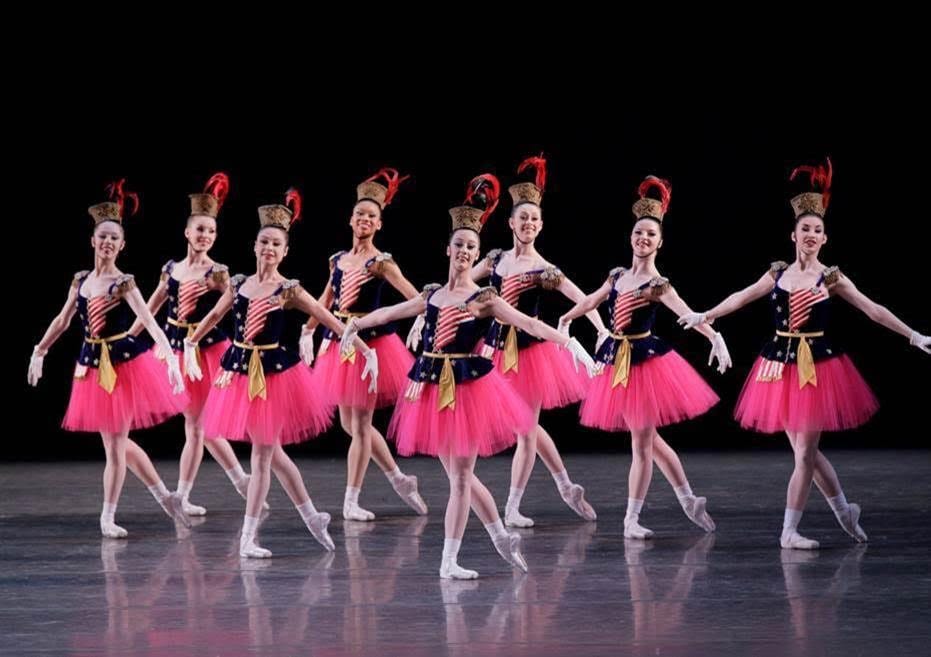
"Western Symphony", "The Unanswered Question", "Tarantella", "Stars and Stripes"
New York City Ballet
David H. Koch Theater
Lincoln Center
New York, New York
September 26, 2023
It is odd to program two upbeat Americana closing ballets on the same program, but the audience didn’t seem to mind the lack of variety; only the brief, darkly mysterious “The Unanswered Question” interrupted the bouncy evening. There were several fine debuts, including Roman Mejia, NYCB’s boy wonder, exploding as El Capitan in “Stars and Stripes” and sending the audience home in a haze of excitement. Both “Stars and Stripes” and “Western Symphony” (the opening ballet) are witty explorations of the classical style hidden behind their folksy auras. They are symphonic, with the traditional four movements (“Western Symphony” originally had a scherzo between the adagio and the finale), formal corps patterns, hoe downs and square dances instead of mazurkas and czardas and, in “Stars and Stripes” a Petipa-style grand pas de deux, with an adagio, solo variations, and a bravura coda. Even the raucously American baton and trumpet so proudly flaunted in “Western Symphony” are surely cousins of Esmeralda’s tambourine and all those parrots in “La Bayadère”.
Olivia MacKinnon and Gilbert Bolden III debuted in the first movement of “Western Symphony” with a welcome lightness of touch; they did not overdo the comedy (so easy to do and so tiresome to watch). MacKinnon brought a touch of elegance to the little dance hall girl going after her man, wagging her shoulders with a flirtatious gleam in her eye. Her dancing was sharp, clear, and buoyant. Bolden, one of NYCB’s group of impressive young men, showed off his elegant jump and effortless turns with a witty nonchalant swagger; he rocks that cowboy hat.
Indiana Woodward with Jovani Furlan (in his debut) were a slightly ditzy couple in the “Swan Lake” on the prairie episode. Woodward had a fine deadpan air and didn’t over do the comedy. Her performance, though, was a bit disappointing; she didn’t do the Italian fouettés and couldn’t quite manage the turns she substituted. I missed the very funny slight air of panic as the dancer realizes she is slipping through her partner’s hands, and the hint of swan arms as she exits. It may be that these last two weren’t in the original choreography, but they are a very witty touch. Furlan, as the forlorn cowboy, had a true “aw shucks” strut and again didn’t over play the comedy.
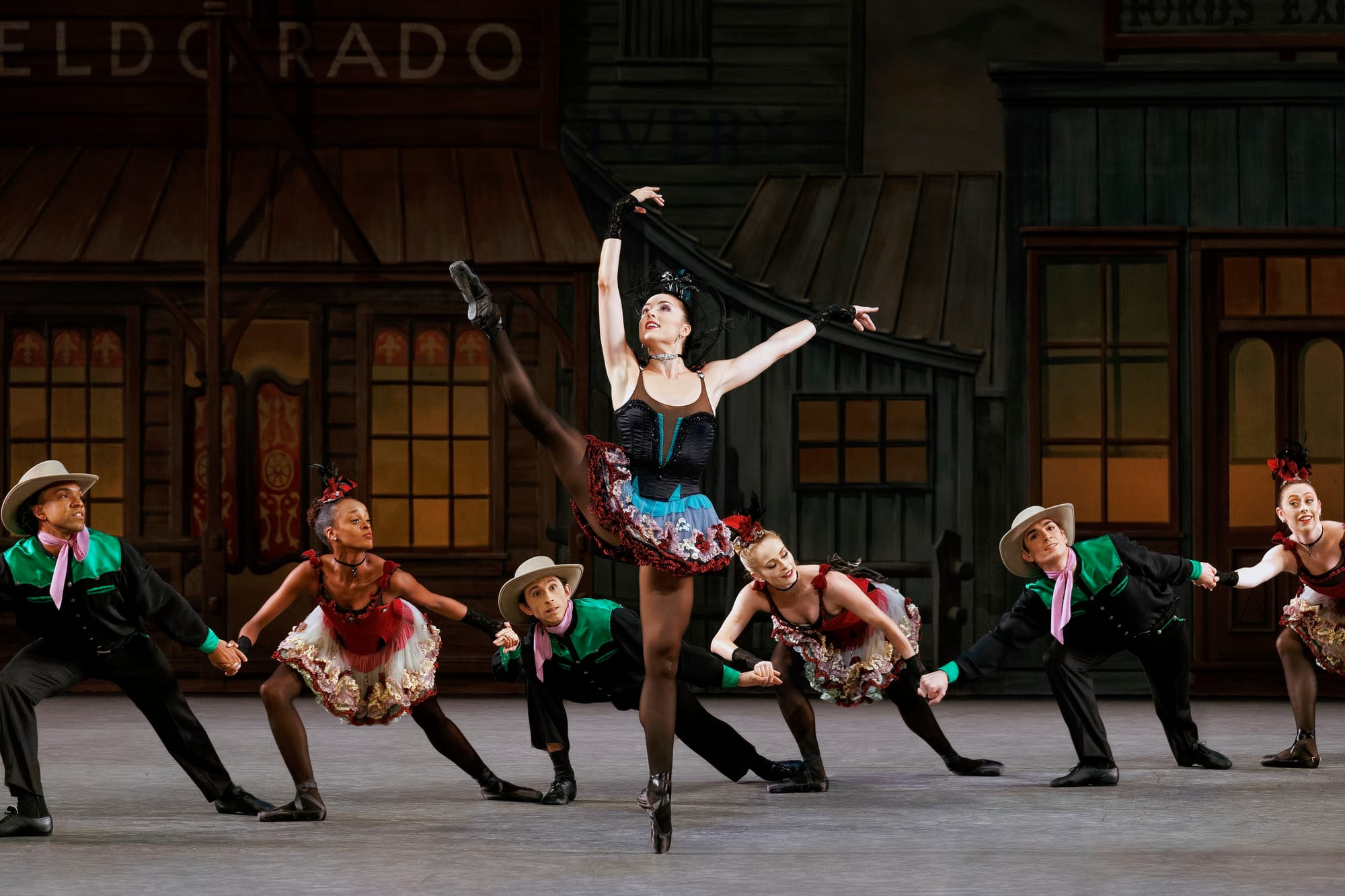
There is plenty of comedy in the final Rondo, where Emily Kikta, in her enormous hat, towered over everyone. She seemed to be a bit rushed, in the beginning, as if there were too many steps for her stately legs to get around, but once she lost the hat and launched into the fouettés, she was home free, exuberant and all-conquering. She certainly conquered Andrew Veyette, who, despite his veteran status, pulled out all the stops to impress her (and the audience). Yes, his jumps have been higher in the past but his energy and style—he struts with the best—were captivating.
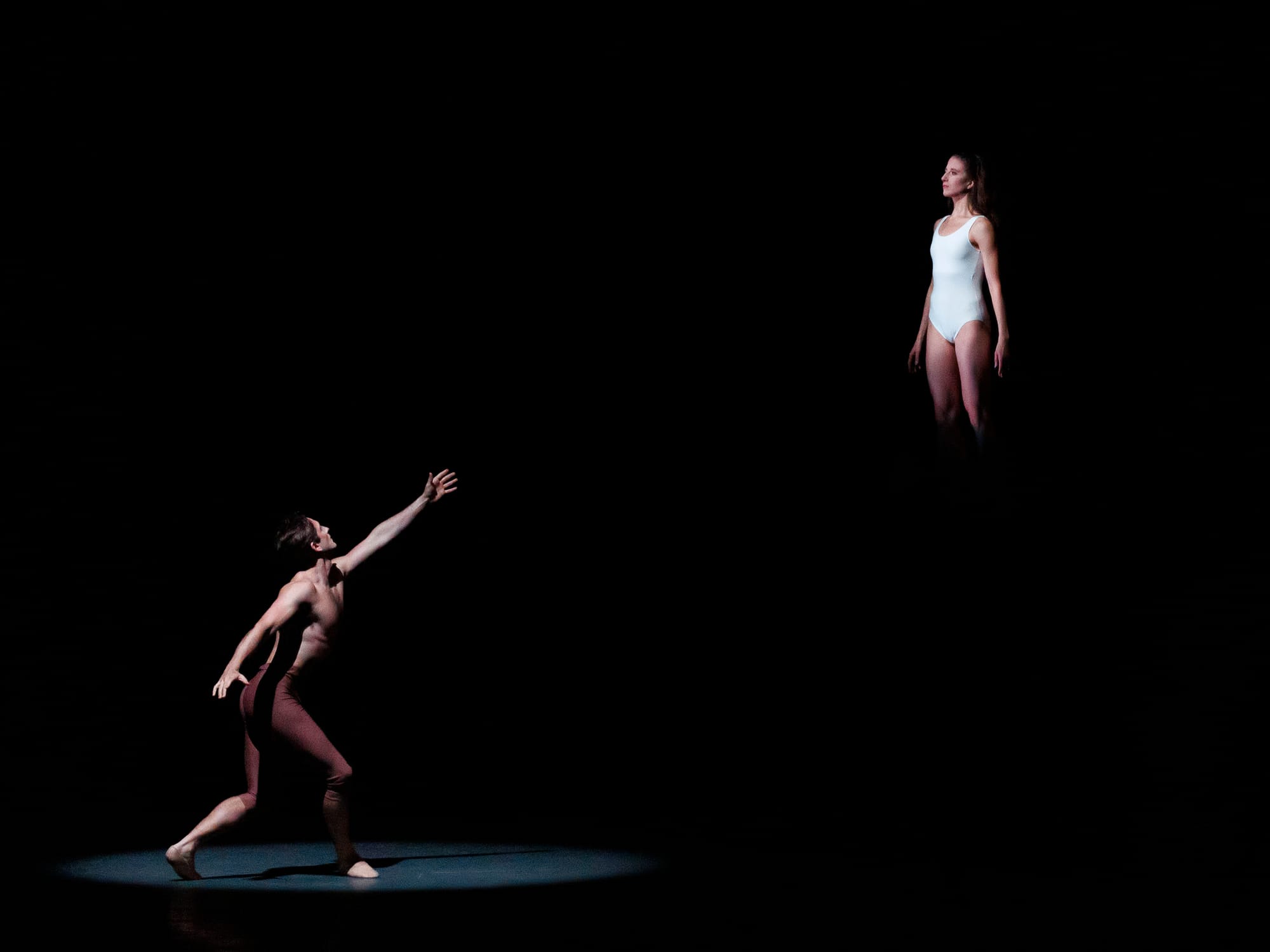
“The Unanswered Question” is an excerpt from “Ivesiana”, Balanchine’s frequently revised 1954 ballet to selections from Charles Ives. It does work better, I think, in context, when the audience’s ears are more attuned to the eerie, haunting Ives music, and the darker atmosphere. (The strange opening of “Ivesiana”, “Central Park in the Dark”, with its corps shuffling on their knees, makes the floating woman of “The Unanswered Question” seem like a ray of hope). Sara Adams, substituting for Ashley Laracey, made an early debut. The role is easy to dance (she is carried throughout the brief work) but difficult to perform, as she needs a sphinx-like impassiveness combined with a mysterious power, pulling all towards her. The most successful dancer I have seen perform it was Janie Taylor, whose pale face and mass of blond hair seemed to glow in the dark. Adams’ darker hair disappeared in the gloom, making it harder to see her. She did have an eerie calm and performed fearlessly, falling back with a heart stopping suddenness. Harrison Coll, desperate to touch her, moved with a weighted and powerful desolation, a hapless everyman trying to reach a dream.
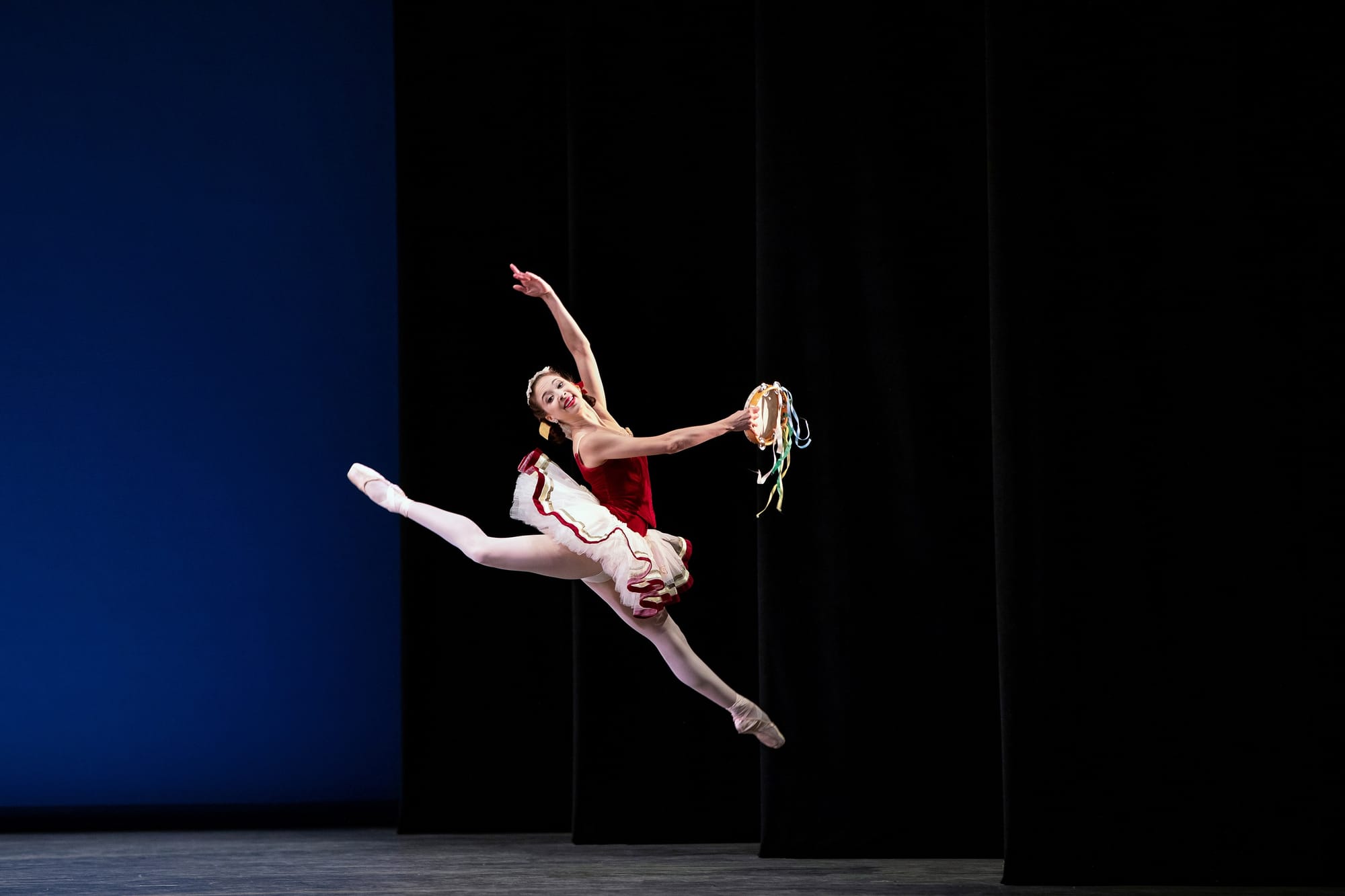
The bright and bouncy “Tarantella”, with Erica Pereira and Daniel Ulbricht, with its echoes of Bournonville, banished any gloom. Ulbricht may have lost a bit of elevation, but his theatrical savvy, as he played with that tambourine with a sly and witty timing, more than made up for any amount of elevation. His jumps still seemed to float and his turns still seemed to speed up and slow down at will. Pereira, too, seemed ageless, a sunny soubrette, and looked lovely in that costume.
Sara Adams returned as another sunny soubrette with a baton instead of a tambourine for the opening movement of “Stars and Stripes”. She twirled her baton without mishap—it’s lots of fun to watch, but must be a bit nerve-racking to dance. She sparkled through the choreography with light jumps and joyous hops. The corps, too, moved with a uniform snap to the rhythmic Sousa tunes; the white gloves and socks do make any missteps glaringly obvious.
There were no missteps in the second movement, led by a relaxed and flowing Megan LeCrone, whose soaring jumps, high kicks, and witty swagger were as cheerful as the corps bouncing emboîtés, so redolent of Petipa. The men of the third campaign, led energetically by Sebastian Villarini-Velez, were especially sharp and snappy, saluting as if they meant it.
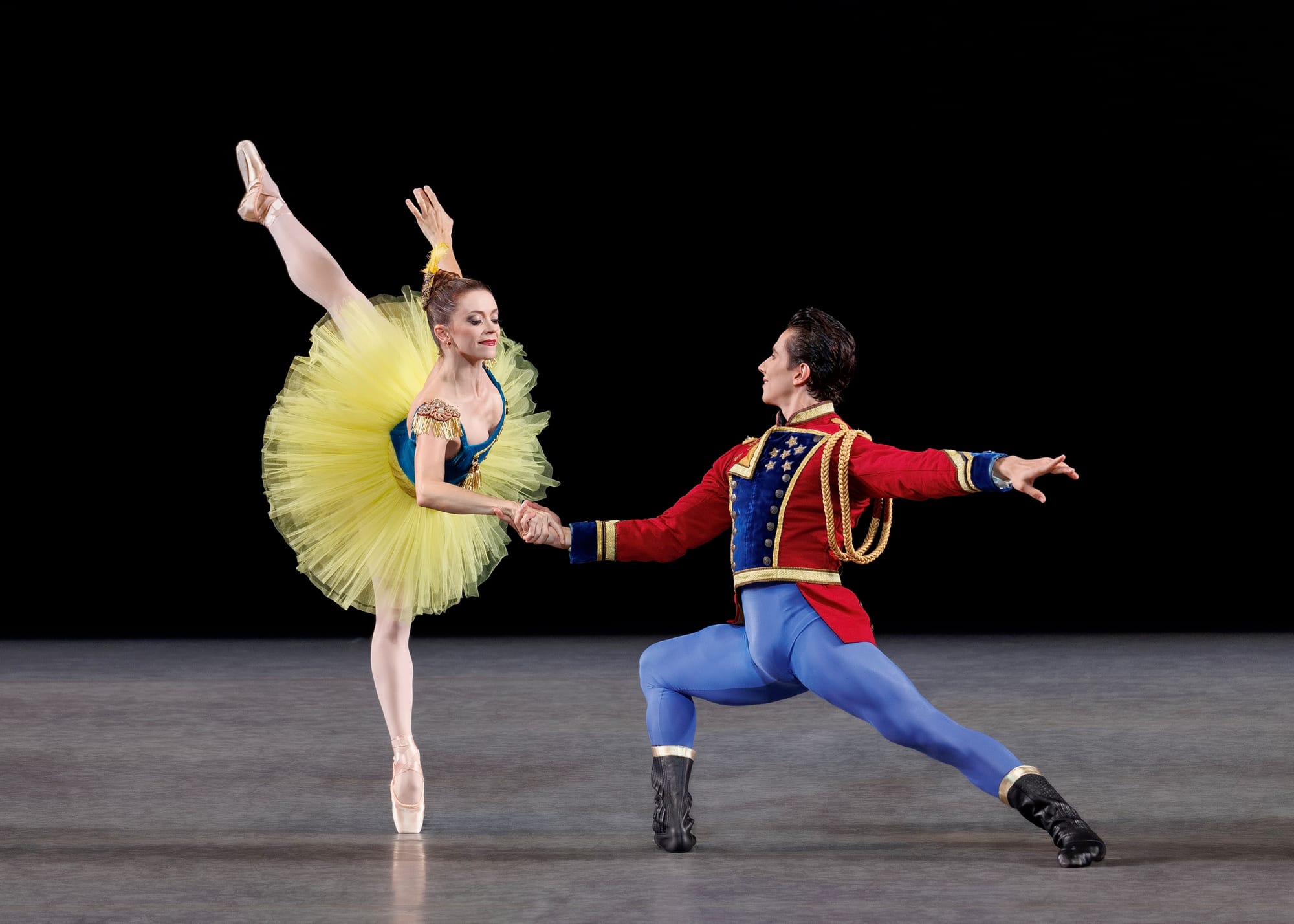
Liberty Bell (Megan Fairchild) and El Capitan (Roman Mejia in his debut) were a very well-matched couple, neither falling into the overly cute trap. Fairchild treated the little head swishing feathers as an accent, not a joke, approached the choreography seriously, which made the occasional silliness even funnier. Her balances in the adagio were absolutely phenomenal, solid and graceful, and she brought her hand down slowly, almost reluctantly, as if she wanted to stay longer. Her footwork was crisp and clear, and her turns were thrilling.
Mejia did have a few near missteps with his partnering in the adagio, but recovered well, and his solos with a slight “You ain’t seen nothing yet” swagger were electric. His frog-style jumps seemed to hover, and the turns a la seconde were peppered with little hops, a Baryshnikov-style accent that perfectly suits the extroverted atmosphere. Together they created a crescendo of excitement, gloriously celebrating the thrill of movement; it may not be the most subtle of ballets, but it is so much fun to watch.
© 2023 Mary Cargill



